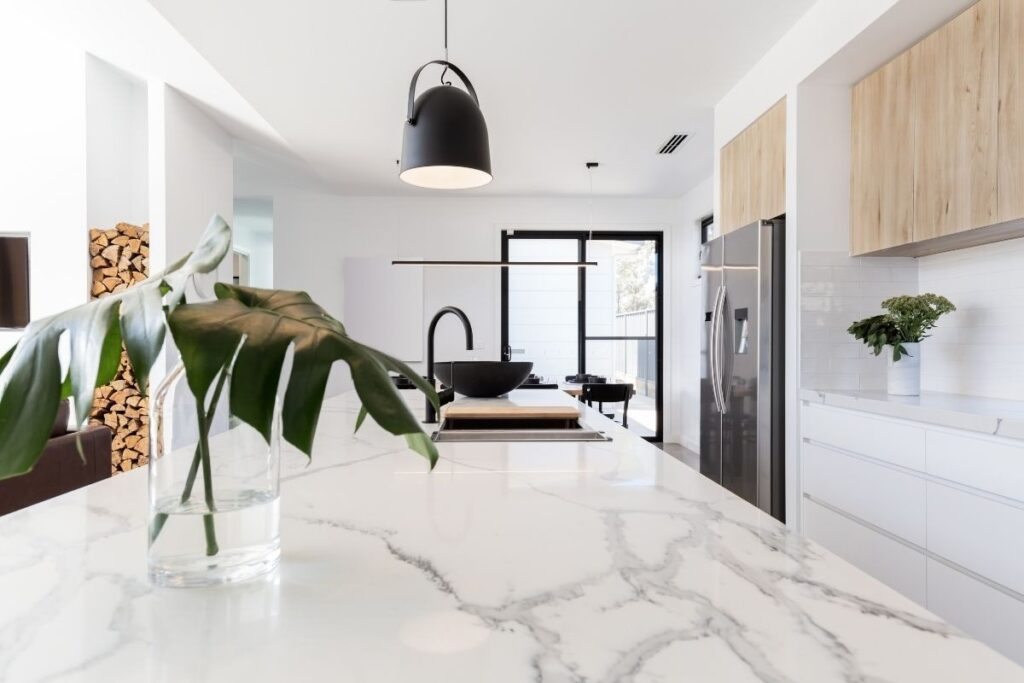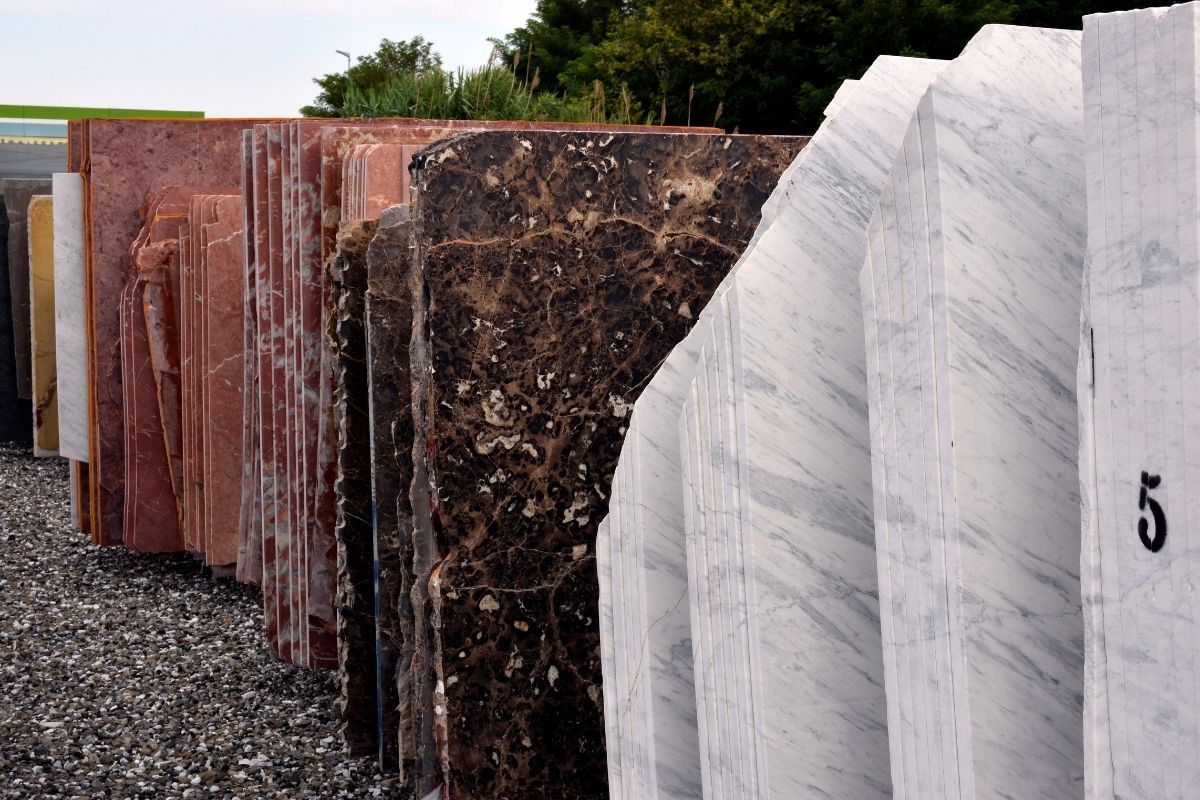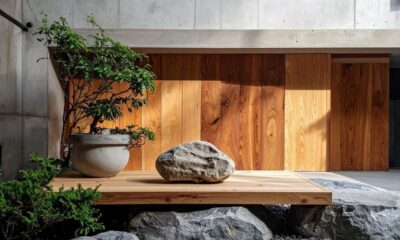Blog
Comparing Polished vs. Honed Marble Finishes for Interior Design
Marble is a timeless and luxurious material that adds elegance to any interior space. Whether you’re drawn to the shine of polished surfaces or the soft sophistication of honed textures, the choice is vital to the atmosphere you wish to create.
Particularly in spaces aiming to highlight natural materials, incorporating high-quality stones like Turkish travertine marble can significantly enhance the overall design. This comprehensive guide explores the differences between polished and honed marble to help you make an informed design decision.
We’ll delve into practical applications, aesthetic value, long-term maintenance, and how these finishes integrate with various interior design styles.
What Is a Polished Marble Finish?
A polished marble finish is achieved through a process of grinding and buffing the stone until it reaches a high-gloss, reflective surface. This finish enhances the marble’s natural color and veining, creating a striking, mirror-like appearance. Polished marble is often used in luxurious settings where a sophisticated and formal look is desired.
Key characteristics of polished marble:
- High-gloss, shiny surface
- Reflects light and brightens spaces
- Brings out the natural color and veining of the stone
- Smooth to the touch
- Typically used in more decorative, low-traffic areas for its aesthetic appeal
What Is a Honed Marble Finish?
A honed marble finish is created by grinding the surface of the marble to a smooth, matte or satin-like finish without the reflective gloss. This results in a more understated and natural look that many designers and homeowners prefer for its subtle elegance.
Key characteristics of honed marble:
- Matte or low-sheen surface
- Less reflective, more muted appearance
- Retains a soft, organic texture
- More resistant to scratches and etching than polished marble
- Suitable for practical, high-traffic environments
Key Differences Between Polished and Honed Marble
Understanding the key differences between polished and honed marble finishes is essential to making the right choice for your interior design project. While both offer timeless appeal, they vary in texture, appearance, and maintenance needs.
| Feature | Polished Marble | Honed Marble |
| Surface Finish | Glossy, reflective | Matte, satin-like |
| Light Reflection | High | Low |
| Color & Veining | More pronounced | Softer, muted |
| Slip Resistance | Slippery when wet | Better traction |
| Maintenance | Prone to etching and staining | More forgiving surface |
| Common Use Areas | Bathrooms, walls, countertops | Floors, high-traffic areas |
Pros and Cons of Polished Marble
Before choosing a polished marble finish, it’s important to weigh its aesthetic strengths against its practical considerations. Below are the primary advantages and disadvantages of using polished marble in interior spaces.
Pros:
- Creates a luxurious, elegant aesthetic
- Enhances natural color and veining
- Easy to wipe clean
- Works well with lighting to brighten up darker rooms
Cons:
- More prone to visible scratches and etching
- Can be slippery when wet
- Requires more frequent sealing and maintenance
- May require professional care to restore shine after wear

Pros and Cons of Honed Marble
Honed marble offers a distinctive balance of beauty and practicality, making it a popular choice for both contemporary and classic interiors. Below are the main advantages and drawbacks to consider when opting for a honed finish.
Pros:
Choosing a honed marble finish comes with several practical advantages that make it a preferred option for high-traffic and modern spaces.
- More resistant to scratches and etching
- Offers better slip resistance
- Provides a natural and relaxed appearance
- Ideal for flooring and worktops due to its durability
Cons:
- Colors and patterns are less vibrant
- May show stains more easily without proper sealing
- Can require more frequent cleaning in high-traffic areas
- Might not offer the same “wow” factor as polished marble
Which Finish Is Best for Different Interior Spaces?
Choosing between polished and honed marble depends largely on the function of the space and your design goals:
Best Uses for Polished Marble:
- Bathroom walls and vanities: Adds elegance and brightness
- Fireplace surrounds: Highlights veining and acts as a statement piece
- Decorative features: Ideal for accent walls or sculptures
- Entryways or formal living rooms: Delivers visual impact and luxury
Best Uses for Honed Marble:
- Flooring: Especially in high-traffic areas such as hallways and kitchens
- Kitchen countertops: Less prone to showing wear
- Stairs: Provides better grip and safety
- Bathroom floors: Reduces slip hazards while maintaining aesthetic appeal
Choosing the Right Marble Finish for Your Design Vision
When selecting between polished and honed marble finishes, consider both the aesthetic and practical implications:
- For a classic and formal interior, polished marble may be the better fit.
- For a modern, minimalist, or rustic design, honed marble offers a more natural and understated appeal.
- Evaluate the lighting conditions in the space—polished marble reflects more light, while honed absorbs it.
- Think about lifestyle and usage: if you have pets or children, honed marble may be the more durable and forgiving choice.
- Factor in long-term maintenance and whether ease of cleaning or visual brilliance matters more.
In conclusion, both finishes offer unique benefits and visual appeal. Understanding their differences helps ensure your interior design not only looks beautiful but also functions well over time. Whether you’re renovating a bathroom or designing a dream kitchen, selecting the right marble finish plays a critical role in achieving your vision.
If you’re seeking premium quality marble or authentic Turkish travertine tiles, explore the wide range of options offered by Cem Marble, a trusted name in natural stone craftsmanship. Discover their collection to find the perfect finish for your next interior project.


















